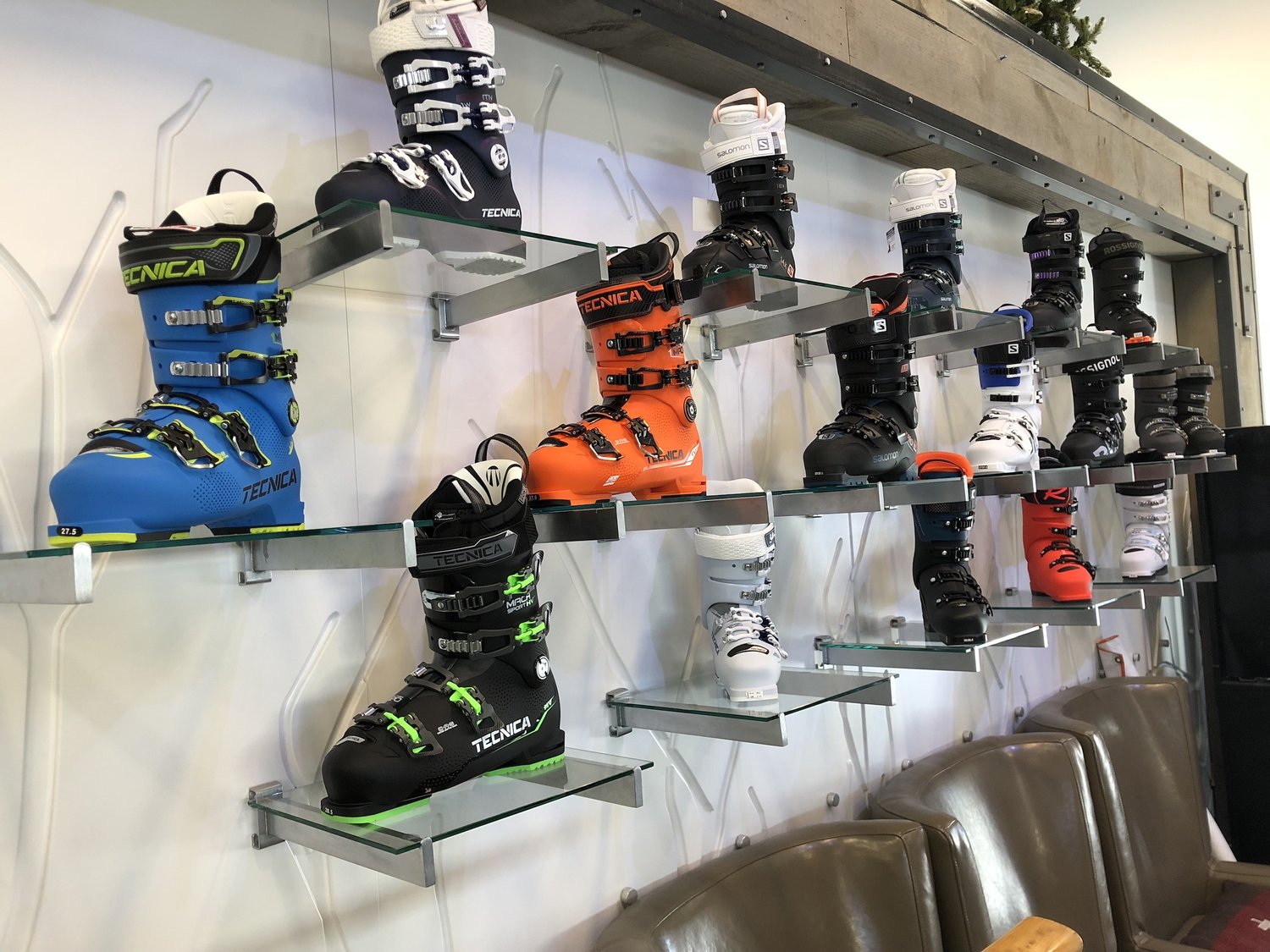

Articles
How To Store Ski Boots
Modified: February 23, 2024
Learn the best way to store your ski boots with these helpful articles. Keep your ski gear organized and in top condition for your next adventure.
(Many of the links in this article redirect to a specific reviewed product. Your purchase of these products through affiliate links helps to generate commission for Storables.com, at no extra cost. Learn more)
Introduction
Skiing is a popular winter sport enjoyed by millions of people around the world. It combines adrenaline, skill, and the thrill of gliding down snow-covered slopes. One essential piece of equipment that every skier needs is a pair of ski boots. These boots not only provide crucial support and control while skiing but also protect your feet from the harsh winter conditions. Therefore, it’s vital to take proper care of your ski boots, especially during the off-season when they are not in use.
In this article, we will discuss the importance of proper storage for ski boots and provide useful tips for storing them correctly. By following these guidelines, you can ensure that your ski boots remain in excellent condition and ready for action when the next ski season arrives.
So why is proper storage important for ski boots? Firstly, ski boots are investments that can last for several seasons if well-maintained. Storing them properly will help protect their structural integrity, prolonging their lifespan. Additionally, proper storage helps maintain the boots’ fit by preventing them from warping or losing their shape over time. This ensures that you will have a comfortable and secure fit when you put them on for your next ski adventure.
Choosing the right storage location is crucial for keeping your ski boots safe and in optimal condition. Ideally, find a cool, dry place with consistent temperatures. Fluctuations in temperature and humidity can damage the materials of the boots, leading to cracks or deterioration. Avoid storing them in areas that are exposed to direct sunlight, such as near windows. Sunlight can cause the boots’ materials to fade and weaken over time.
Prior to storing your ski boots, it’s essential to clean and dry them thoroughly. This means removing any dirt, debris, or moisture that may have accumulated during your last skiing outing. Use a soft brush or cloth to remove dirt from the outer shell and wipe down the inside of the boot with a dry towel. If the boots are wet, allow them to air dry completely before storing them. Moisture trapped inside the boots can promote mold or mildew growth, leading to unpleasant odors and potential damage to the boots.
Key Takeaways:
- Proper storage and maintenance of ski boots are essential for preserving their performance and longevity. Choose a cool, dry storage location, clean and dry the boots thoroughly, and use boot trees or stands to maintain their shape.
- Regular maintenance and inspection of ski boots are crucial for identifying and addressing issues early on. Keep the boots clean, check for damage, and store them properly to ensure optimal performance and comfort on the slopes.
Read also: 15 Incredible Ski Boot Dryer For 2025
Why Proper Storage Is Important for Ski Boots
Proper storage is essential for ski boots to maintain their performance and longevity. Ski boots are subject to various environmental factors that can affect their condition if not stored correctly.
One of the primary reasons for proper storage is to prevent damage to the structural integrity of the boots. When ski boots are not stored properly, they can become vulnerable to warping or deformation. This can occur if the boots are stored in a position that puts excessive pressure on certain areas. For example, if the boots are stacked on top of each other or stored in a way that causes the shell to bend, the shape of the boots can be compromised. This not only affects the aesthetics of the boots but can also impact their performance on the slopes.
In addition to maintaining the shape of the boots, proper storage helps preserve the fit and comfort. Ski boots are designed to conform to the shape of the skier’s feet over time. However, improper storage can lead to the boots losing their custom fit. For example, if the boots are stored in a way that compresses the liners or puts unnecessary pressure on specific areas, the liners may become compressed or deformed. This can result in discomfort and diminished performance when wearing the boots.
Ski boots are exposed to various elements when used on the slopes, including snow, moisture, and dirt. If these contaminants are not properly removed before storage, they can cause long-term damage to the boots. Moisture left inside the boots can lead to mold or mildew growth, resulting in unpleasant odors and potential health hazards. Dirt and debris can also degrade the materials of the boots over time, leading to faster deterioration.
Another reason for proper storage is to protect the boots from extreme temperatures. Exposure to extreme heat or cold can cause the materials of the boots to expand or contract, which can lead to cracking or weakening. It’s important to store ski boots in an environment with consistent and moderate temperatures to avoid such damage.
Proper storage also helps prevent pest infestation. Insects and rodents are attracted to warm and humid areas, making ski boots an ideal breeding ground if not stored correctly. By ensuring the boots are stored in a clean and dry environment, you can minimize the risk of pest damage.
Overall, proper storage of ski boots is crucial to maintain their performance, comfort, and longevity. By following the guidelines for storage, you can ensure that your ski boots are in excellent condition and ready for your next skiing adventure.
Choosing the Right Storage Location
When it comes to storing your ski boots, choosing the right storage location is just as important as the storage method itself. The right location will help protect your boots from damage and ensure they remain in optimal condition during the off-season.
Firstly, it’s important to find a storage location that is cool and dry. Extreme temperatures and high humidity can negatively impact the materials of the boots. Excessive heat can cause the boots to become brittle and prone to cracking, while high humidity can promote mold or mildew growth. Therefore, avoid storing your ski boots in areas that are exposed to direct sunlight or areas that are prone to moisture, such as basements or garages.
Consistent temperature is crucial for maintaining the integrity of your ski boots. Fluctuations in temperature can cause the materials to expand or contract, leading to warping or damage. Therefore, choose a storage location that has a moderate temperature year-round. A cool and dry closet or a dedicated ski storage area in your home would be ideal.
You should also consider the airflow and ventilation of the storage location. Proper ventilation helps prevent condensation and allows for proper air circulation, reducing the risk of mold or mildew growth. If you are using a closet or an enclosed space, ensure there is adequate airflow and ventilation to keep the boots dry and fresh.
Another factor to consider when choosing a storage location is the accessibility of the area. You want your ski boots to be easily accessible when the next ski season arrives. Avoid storing them in hard-to-reach or cluttered areas, as this can make it challenging to retrieve them when you need them. A designated shelf or rack specifically for your ski boots is a convenient and accessible storage solution.
Lastly, consider the security of the storage location. Ski boots can be valuable investments, and it’s important to keep them safe from theft or damage. If you have a secure room or a locked storage area, it’s recommended to store your ski boots there to provide peace of mind.
In summary, when choosing the right storage location for your ski boots, prioritize a cool, dry, and well-ventilated area with consistent temperatures. Ensure the storage location is easily accessible and offers adequate security to protect your boots. By selecting the appropriate storage location, you can effectively safeguard your ski boots and maintain their quality for seasons to come.
Cleaning and Drying the Boots Before Storage
Prior to storing your ski boots, it’s crucial to clean and dry them thoroughly. Proper cleaning and drying will help prevent moisture buildup, odors, and potential damage that can occur when dirt and debris are left inside the boots.
To begin the cleaning process, use a soft brush or cloth to remove any dirt, dust, or debris from the outer shell of the boots. Pay close attention to the areas around the buckles, straps, and soles. Gently brush away any residue to ensure a clean surface.
Once the outer shell is clean, it’s important to address the inside of the boots. Start by removing the liners from the shell, if possible. Most modern ski boots have removable liners, which can be easily taken out for cleaning and drying. Check the manufacturer’s instructions to ensure that your specific boots have removable liners.
Next, inspect the liners for any visible dirt or stains. If there are soiled areas, gently wipe them with a damp cloth or sponge. Avoid using harsh chemicals or abrasive cleaners, as they can damage the liners’ materials.
After cleaning the liners, it’s essential to dry them thoroughly. Moisture trapped in the liners can lead to mold or mildew growth, resulting in unpleasant odors and potential damage to the boots. To dry the liners, you can use a clean towel or place them in a well-ventilated area away from direct heat sources. Allow them to air dry completely before reinserting them into the boots.
While the liners are drying, you can focus on drying the outer shell of the boots. Use a dry towel to remove any remaining moisture on the surface of the boots. Pay attention to the areas around the buckles and straps, as water can easily get trapped in those areas. For stubborn moisture or hard-to-reach spaces, you can use a hairdryer on a low heat setting. Ensure that the hairdryer is not too hot, as excessive heat can damage the boot materials.
Before storing your ski boots, it’s good practice to apply a boot-specific spray or treatment to the liners and the boots’ outer shell. These sprays help to maintain the boots’ freshness, prevent odors, and protect the materials from deterioration during storage. Follow the manufacturer’s instructions regarding the application of the spray or treatment.
In summary, cleaning and drying your ski boots before storage is essential to prevent moisture buildup, odors, and potential damage. By properly cleaning the outer shell and removing and drying the liners, you can ensure that your ski boots are clean, fresh, and ready for storage.
Removing the Liners
When it comes to storing ski boots, one important step is to remove the liners from the boots. While not all ski boots have removable liners, many modern boots do, and removing them before storage has numerous benefits.
Firstly, removing the liners allows for better cleaning and drying. The liners often absorb sweat and moisture during use, which can lead to unpleasant odors and potential mold or mildew growth if not properly addressed. By removing the liners, you can thoroughly clean and dry them separately, ensuring that any moisture or dirt is effectively removed.
Removing the liners also helps to maintain their shape and form. Over time, the liners can become compressed or deformed from repetitive use. By taking them out of the boots during storage, you allow them to regain their natural shape, ensuring a better fit and increased comfort when you put the boots back on for the next ski season.
To remove the liners from your ski boots, start by loosening the boot’s buckles and undoing the power strap if applicable. Next, locate the pull tab or loop on the back of the liner. Gently pull on the tab while holding onto the boot’s shell to ease the liner out of the boot.
Some liners may have attachment points or Velcro tabs connecting them to the shell. If this is the case, be sure to detach these before attempting to remove the liners completely. Always refer to your specific boot’s manufacturer instructions for the proper removal procedure.
Once the liners are removed, take the time to inspect them for any signs of wear or damage. Check for any loose stitching, tears, or areas of thinning material. If you notice any significant issues, it’s advisable to have them repaired or replaced before the next ski season.
To clean the liners, refer to the manufacturer’s instructions for their specific care guidelines. In most cases, using a mild soap or detergent and warm water is sufficient for removing dirt and odors. Gently hand wash the liners and rinse them thoroughly. Avoid machine washing or using harsh chemicals, as they can damage the liners’ materials.
After cleaning, ensure that the liners are completely dry before placing them back into the boots. You can air dry them in a well-ventilated area, away from direct heat sources. It’s important that the liners are completely dry to prevent any moisture buildup or mold growth during storage.
In summary, removing the liners from your ski boots before storage allows for better cleaning, drying, and maintenance. It helps to maintain their shape, increases comfort, and prevents odors and potential damage. By properly removing, cleaning, and drying the liners, you can ensure that your ski boots are ready for action when the next ski season arrives.
Read more: How To Store Skis At Home
Storing Boots in an Upright Position
When it comes to storing ski boots, one of the most important considerations is the position in which they are stored. Storing boots in an upright position offers several advantages and helps maintain the boots’ shape, integrity, and overall condition.
Storing boots upright helps to prevent the boots from getting crushed or deformed. When boots are stored horizontally or under pressure, the weight can cause the boots’ shell to bend or warp. This can lead to discomfort and negative effects on the boots’ performance when you are ready to use them again.
Additionally, storing boots upright allows any excess moisture to drain out naturally. When boots are stored upside down or slanted, any moisture or melting snow that may be trapped inside the boots can pool and remain stagnant, leading to mold or mildew growth and unpleasant odors. By storing the boots upright, any moisture can evaporate more easily.
Storing boots upright also helps maintain the proper alignment of the boots’ buckles, straps, and other components. When stored horizontally or under pressure, these components can become misaligned or damaged, making it challenging to properly secure the boots on your feet when you are ready to ski again.
To store your ski boots in an upright position, you can use a boot rack specifically designed for this purpose. A boot rack typically has slots or individual compartments where you can insert each boot in an upright position. This keeps the boots securely in place and allows for proper airflow and ventilation.
If you don’t have a boot rack, you can also use a tall shoe rack or even repurpose a sturdy bookshelf. The important thing is to ensure that the boots are placed in an upright position and not leaning against each other or any other objects that could cause them to become deformed.
When placing the boots on the rack or shelf, make sure they are positioned with the soles touching the surface and the cuff or upper part of the boot upright. If your boots have a power strap, it’s advisable to fasten it to help maintain the proper alignment and shape of the boots.
It’s also a good idea to periodically rotate the position of the boots on the rack to avoid any long-term pressure points or indentations. This can help distribute the weight and ensure that all areas of the boots maintain their shape and integrity.
In summary, storing ski boots in an upright position helps maintain their shape, prevents deformation, allows for proper drainage of moisture, and preserves the alignment of the buckles and straps. By using a boot rack or repurposing a suitable rack or shelf, you can store your boots upright and ensure they remain in optimal condition for the next ski season.
Using Boot Trees or Boot Stands
When it comes to storing ski boots, using boot trees or boot stands is a practical and effective method to help preserve their shape and support their overall structure. Boot trees or stands are designed to mimic the shape of a foot and provide support for the boots when they are not in use.
Using boot trees or stands offers several benefits. Firstly, they help prevent the boots from developing creases or wrinkles. When ski boots are not properly supported, the weight of the boots can cause the materials to fold or bend, which can lead to permanent creasing over time. Boot trees or stands provide the necessary support to maintain the boots’ shape and prevent creasing.
Additionally, boot trees or stands help to keep the boots upright, which is beneficial for proper airflow and ventilation. By keeping the boots in an upright position, any trapped moisture or dampness can evaporate more easily, reducing the risk of mold or mildew growth and unpleasant odors. They also allow for better air circulation, keeping the boots fresh and dry.
When choosing boot trees or stands, opt for ones that are designed specifically for ski boots. Ski boot trees typically have adjustable or customizable components to ensure a perfect fit inside the boots. Look for boot trees with sturdy construction that can withstand the weight of the boots and provide reliable support.
To use boot trees, simply insert them into the ski boots after removing the liners. Make sure the boot trees are positioned all the way to the toe of the boots and snugly fit the width of the boot shells. Adjust any customizable components, such as length or width, according to your specific boot size and shape. The boot trees should provide enough tension to keep the boots firm but not so much that they distort the shape of the boots. Avoid over-tightening the boot trees, as this can potentially damage the boots.
If you don’t have boot trees, you can use boot stands as an alternative. Boot stands typically have a base that holds the boots upright and a support bar that extends up into the boots to provide stability. Place the boots on the stands with the soles resting on the base and the cuff or upper part of the boots supported by the support bar. Keep the boots evenly spaced to prevent them from touching each other.
Whether you choose boot trees or boot stands, it’s important to store the boots in a cool, dry, and well-ventilated area to maintain their overall condition. Avoid storing them in places exposed to direct sunlight or excessive humidity, as this can degrade the materials of the boots.
In summary, using boot trees or boot stands when storing ski boots is an effective way to maintain their shape, prevent creasing, and improve airflow and ventilation. By providing proper support and allowing for better air circulation, boot trees or stands help keep the boots fresh, dry, and in optimal condition for future use.
Store ski boots in a cool, dry place to prevent mold and mildew. Remove the liners to air them out and buckle the boots loosely to maintain their shape. Avoid storing them in direct sunlight or near heat sources.
Protecting Boots from Extreme Temperatures
Proper temperature control is essential for preserving the quality and integrity of your ski boots during storage. Extreme temperatures can have detrimental effects on the materials of the boots, leading to cracking, warping, and other forms of damage. It’s important to take steps to protect your boots from these temperature extremes to ensure they remain in optimal condition for future use.
One of the primary concerns is protecting the boots from excessive heat. High temperatures can cause the materials of the boots to expand and weaken, making them more susceptible to damage. Avoid storing your ski boots in areas that are exposed to direct sunlight or near heat sources such as radiators, heaters, or furnaces. Instead, choose a storage location that maintains a moderate temperature, even during the hottest months.
If you live in an area with hot summers or have limited control over the temperature of your storage space, consider using a boot bag or storage box specifically designed to insulate and protect against extreme heat. These specialized storage solutions can help maintain a more stable temperature within the bag or box, shielding your boots from excessive heat.
On the other hand, extreme cold can also be detrimental to ski boots. Freezing temperatures can cause the materials to become brittle and prone to cracking or breaking. To protect your boots from extreme cold, avoid storing them in areas that are susceptible to freezing, such as unheated garages, sheds, or basements without climate control.
If you live in an area with cold winters or need to store your boots in a cold environment, consider using insulated boot bags or storage containers. These provide an additional layer of protection against freezing temperatures. Alternatively, you can store your boots in a temperature-controlled area of your home, such as a closet or storage room with central heating.
When transporting your ski boots during extreme temperatures, such as when traveling to and from the ski resort, take precautions to mitigate the effects of heat or cold. In extreme heat, avoid leaving your boots inside a hot car or exposed to direct sunlight for an extended period. In extreme cold, consider wrapping your boots in a warm towel or blanket to provide some insulation during transport.
By taking steps to protect your ski boots from extreme temperatures, you can ensure their longevity and maintain their performance. Whether it’s choosing a suitable storage location, using insulated storage solutions, or being cautious during transport, keeping your boots away from extreme heat or cold will help preserve their quality and functionality for future skiing adventures.
Avoiding Sunlight Exposure
When it comes to storing ski boots, it’s crucial to protect them from sunlight exposure. Sunlight contains ultraviolet (UV) rays that can be harmful to the materials of the boots, leading to fading, deterioration, and reduced performance. Taking steps to avoid sunlight exposure can help preserve the quality and longevity of your ski boots.
One of the primary concerns with sunlight exposure is that it can cause the colors of the boots to fade. Ski boots often come in vibrant colors and designs, and prolonged exposure to sunlight can cause these colors to dull or become uneven. This not only affects the aesthetic appeal of the boots but also indicates potential damage to the materials.
UV rays can also weaken and degrade the materials of the boots over time. This can result in the boots becoming more prone to cracking, warping, or structural damage. Sunlight exposure can deteriorate the plastics, rubbers, and other components of the boots, diminishing their overall quality and performance.
To avoid sunlight exposure, it’s important to choose a storage location for your ski boots that is away from direct sunlight. Avoid storing them near windows or in areas of your home where sunlight streams in throughout the day. Even brief exposure to sunlight, especially during the summer months, can have a cumulative effect on the boots.
If your storage location does not offer complete protection from sunlight, consider using a boot bag or storage container that provides UV protection. These specialized bags or containers are designed to shield your boots from the harmful effects of UV rays. They act as a barrier between the boots and sunlight, reducing the risk of damage and fading.
During transportation, take precautions to minimize sunlight exposure. If you need to leave your ski boots unattended, such as when loading them into a car or during a break at the ski resort, place them in a well-shaded area or cover them with a towel or blanket to provide some protection. This will help prevent direct exposure to sunlight and reduce the risk of damage.
In addition to protecting your ski boots from sunlight during storage and transportation, it’s also important to practice proper maintenance and care. Regularly inspect your boots for any signs of fading, cracking, or other damage. If you notice any issues, it may be necessary to have the boots repaired or replaced before the next ski season.
In summary, avoiding sunlight exposure is crucial for preserving the quality and condition of your ski boots. By storing them in a location away from direct sunlight and using UV-protective storage solutions, you can protect your boots from fading, deterioration, and reduced performance. Taking these precautions will ensure that your boots remain in excellent condition and ready for action when the next ski season arrives.
Read more: How To Store Ski Clothes
Storing Boots in a Dry and Ventilated Area
Proper storage of ski boots includes choosing a location that is not only dry but also well-ventilated. Storing boots in a dry and ventilated area helps to prevent moisture buildup, mold, mildew, and unpleasant odors. It also contributes to maintaining the integrity of the boots and ensures they are in optimal condition for your next ski adventure.
Excess moisture is one of the biggest enemies of ski boots. If boots are not stored in a dry environment, moisture can accumulate and lead to the growth of mold and mildew. This not only causes unpleasant smells but can also damage the boots in the long run. Moisture can degrade the materials and weaken the structural integrity of the boots, affecting their performance and lifespan.
Choosing a location that is dry is essential for preventing this moisture buildup. Avoid storing ski boots in areas like basements or garages that are prone to dampness and humidity. Instead, opt for a dry storage area in your home, such as a closet, where the air is less humid.
In addition to being dry, the storage area should also be well-ventilated. Good ventilation allows the air to circulate around the boots, reducing the risk of moisture accumulation. Proper airflow helps to keep the boots fresh and prevents the growth of mold and mildew.
There are several ways to ensure proper ventilation in the storage area. If you’re storing the boots in a closet, make sure it has adequate airflow. Avoid overcrowding the closet, as this can restrict the air circulation. Keep the closet door slightly ajar to allow for continuous airflow.
If you don’t have a closet or prefer another storage option, you can use a boot storage rack or open shelving system. These allow for better air circulation around the boots and help prevent moisture buildup. Make sure the shelves are not overcrowded and that there is enough space between the boots to promote airflow.
In some cases, adding a dehumidifier to the storage area can help in maintaining a dry environment. A dehumidifier helps to remove excess moisture from the air, reducing the risk of mold and mildew growth. This can be especially beneficial if you live in a humid climate or if the storage area tends to be damp.
Lastly, it’s important to regularly inspect the storage area for any signs of moisture or mold. Check for any leaks or areas that may be prone to condensation. If you notice any issues, address them promptly to ensure that the storage area remains dry and well-ventilated.
By storing your ski boots in a dry and well-ventilated area, you can prevent moisture buildup, mold, and mildew. This helps to maintain the condition and quality of the boots, ensuring that they are clean, fresh, and ready for your next skiing adventure.
Preventing Pest Infestation
When it comes to storing ski boots, one often overlooked concern is the potential for pest infestation. Insects, rodents, and other pests are attracted to warm and humid environments, making ski boots an appealing habitat if not stored properly. Taking preventative measures can help protect your boots from pests and ensure that they remain in pristine condition for future use.
One of the most effective ways to prevent pest infestation is to store your ski boots in a clean and dry area. Pests are often attracted to food crumbs, dirt, or other organic materials that may accumulate on or inside the boots. Ensure that your boots are clean and free from any debris before storing them.
Avoid storing your boots in areas where pests are more likely to infiltrate. Basements, garages, or storage areas that are poorly sealed or have easy access for pests should be avoided. Instead, choose a storage location that is less prone to pest entry, such as a closet or a dedicated ski storage area.
To further protect your ski boots from pests, consider using pest deterrents. Mothballs or cedar chips are commonly used to repel insects and rodents. Place them near the boots or in close proximity to the storage area to create a deterrent barrier. However, be cautious when using mothballs, as they can have a strong odor and should be kept away from children and pets.
Another prevention method is to use sealed containers or boot bags. Storing your ski boots in containers or bags that can be securely closed reduces the likelihood of pests accessing the boots. Look for containers or bags that are specifically designed for storing ski boots and provide a tight seal.
Regular inspection of your storage area is important to identify any signs of pest activity. Check for droppings, chew marks, or any other indications of pest presence. If you notice any of these signs, take immediate action to address the infestation and prevent further damage to your boots.
It’s also important to note that pests are less likely to be attracted to areas with good ventilation and air circulation. Proper airflow can discourage pests from settling in the storage area. Ensure that the storage location is well-ventilated, as mentioned in a previous section, to reduce the risk of pest infestation.
If you live in an area prone to specific pests, such as mice or rats, you may want to take additional measures. Set up traps or consult with a pest control professional to address any pest issues in your home. It’s easier to prevent the presence of pests in the first place than to deal with an infestation.
By taking proactive steps to prevent pest infestation, you can protect your ski boots from damage and ensure they remain free from pests. Keeping your boots clean, storing them in a secure location, using pest deterrents, and regularly inspecting the storage area are key practices to keep your boots in excellent condition and ready for your next skiing adventure.
Tips for Long-Term Storage
Long-term storage of ski boots requires special attention to ensure that they remain in optimal condition throughout extended periods of non-use. Proper preparation and storage techniques will help preserve the integrity of the boots and ensure they are ready for action when the next ski season arrives. Here are some tips to consider for long-term storage:
- Clean and dry the boots thoroughly: Before storing your ski boots for an extended period, it’s crucial to clean and dry them thoroughly. Remove any dirt, debris, or moisture from the outer shell and liners. Clean the liners according to the manufacturer’s instructions and ensure that everything is completely dry to prevent the growth of mold or mildew during storage.
- Apply a protective treatment: Consider applying a boot-specific protective treatment to the outer shell and liners. These treatments can help preserve the materials and provide a layer of defense against moisture and other potential damage.
- Remove the liners: If your ski boots have removable liners, it’s recommended to take them out for long-term storage. Removing the liners helps maintain their shape and allows for better ventilation and drying. Store the liners separately in a clean and dry location.
- Store boots in an upright position: Store the boots in an upright position to prevent deformation and maintain their shape. Use a boot rack or boot stands designed specifically for ski boots, ensuring that they are securely held in place and not leaning against each other.
- Choose a cool and dry storage location: Select a storage location that is cool, dry, and well-ventilated. Avoid areas that are exposed to extreme temperatures, direct sunlight, or excessive humidity. Consistent temperature and proper airflow will help prevent moisture buildup and damage to the boots.
- Protect boots from pests: Take precautions to prevent pests from accessing your ski boots during long-term storage. Keep the storage area clean, use pest deterrents such as mothballs or cedar chips, and consider storing boots in sealed containers or bags to reduce the risk of infestation.
- Regularly inspect and maintain: Periodically check your stored ski boots for any signs of damage or deterioration. Address any issues promptly to prevent further damage. Inspect the boots for wear and tear, loose components, or any other concerns that may affect their performance.
- Label and organize: If you have multiple pairs of ski boots, label and organize them for easy identification. This will help you find the desired pair when the ski season returns, avoiding unnecessary handling and potential damage.
By following these tips for long-term storage, you can ensure that your ski boots remain in excellent condition, maintain their performance, and are ready for use when the next ski season begins. Taking the time to properly prepare and store your boots will ultimately extend their lifespan and enhance your skiing experience.
Regular Maintenance and Inspection
Regular maintenance and inspection of your ski boots are essential to ensure their performance, comfort, and longevity. By incorporating routine maintenance into your ski gear care routine, you can catch any issues early on and address them before they escalate. Here are some important aspects of regular maintenance and inspection:
Cleanliness: Keep your ski boots clean by regularly removing any dirt, grime, or debris from the outer shell and liners. This not only helps maintain their appearance but also prevents the accumulation of contaminants that can lead to odors and deterioration of the materials.
Tightness of buckles and straps: Check the tightness of the buckles and straps on your ski boots. Over time, they may become loose or worn out, compromising the stability and fit of the boots. Tighten or replace any damaged buckles or straps as needed to ensure a secure and comfortable fit.
Inspect the liners: Regularly inspect the liners for any signs of wear, tear, or deterioration. Look for loose stitching, thinning materials, or areas that may need reinforcement. If you notice any significant damage or if the liners are no longer providing adequate support or comfort, consider replacing them to maintain the performance and fit of the boots.
Check for damage: Inspect the outer shell of the boots for any cracks, scratches, or damage. Pay attention to the areas around the toe, heel, and sole, as these are particularly vulnerable to wear and tear. Cracks or significant damage to the shell can compromise the structural integrity of the boots and affect their performance and safety.
Check alignment and sole wear: Analyze the alignment of your boots to ensure they are properly aligned with your skis. Misalignment can cause discomfort or affect your balance and control while skiing. Additionally, examine the soles of the boots for signs of excessive wear. If the soles are severely worn down or uneven, it may be necessary to have them resoled to maintain proper traction and compatibility with ski bindings.
Address moisture or odors: If you notice moisture buildup or unpleasant odors in your ski boots, take immediate action. Remove the liners and allow them to dry thoroughly. Clean the inside of the boots with a mild detergent or specialized boot cleaner to eliminate any bacteria or mold that may be causing the odor. Consider using odor-absorbing products or inserts specifically designed for ski boots to keep them fresh between uses.
Store boots properly: Follow the proper storage techniques covered earlier in this article to ensure your ski boots are stored in a way that preserves their shape, protects them from damage, and minimizes the risk of moisture buildup or pest infestation.
By incorporating regular maintenance and inspection into your ski gear care routine, you can catch any issues early, address them promptly, and extend the lifespan of your ski boots. Regular maintenance not only ensures optimal performance and comfort on the slopes but also enhances your overall skiing experience.
Read more: How To Store Ski Skins
Conclusion
Proper storage and maintenance of ski boots are crucial for preserving their performance, comfort, and longevity. By following the guidelines outlined in this article, you can ensure that your ski boots remain in excellent condition when not in use and are ready for action when the next ski season arrives.
Choosing the right storage location, keeping the boots clean and dry, and avoiding sunlight exposure are key factors in protecting your ski boots from damage. Storing them in an upright position with the help of boot trees or stands helps maintain their shape and supports proper airflow and ventilation. Protecting the boots from extreme temperatures, pests, and moisture buildup contributes to their overall condition and extends their lifespan.
Regular maintenance and inspection are also important aspects of ski boot care. By regularly cleaning your boots, checking the tightness of buckles and straps, and inspecting the liners and outer shell for any signs of wear or damage, you can identify and address any issues before they worsen.
Remember to store your ski boots in a location that is cool, dry, and well-ventilated, away from direct sunlight and extreme temperatures. Clean and dry them thoroughly, use boot trees or stands, and take precautions to prevent pest infestations.
By implementing these storage and maintenance practices, you can prolong the lifespan of your ski boots, maintain their performance, and ensure a comfortable and enjoyable skiing experience for seasons to come.
So, don’t neglect your ski boots during the off-season. Give them the care they deserve, and they’ll be your trusty companions on the slopes year after year.
Frequently Asked Questions about How To Store Ski Boots
Was this page helpful?
At Storables.com, we guarantee accurate and reliable information. Our content, validated by Expert Board Contributors, is crafted following stringent Editorial Policies. We're committed to providing you with well-researched, expert-backed insights for all your informational needs.
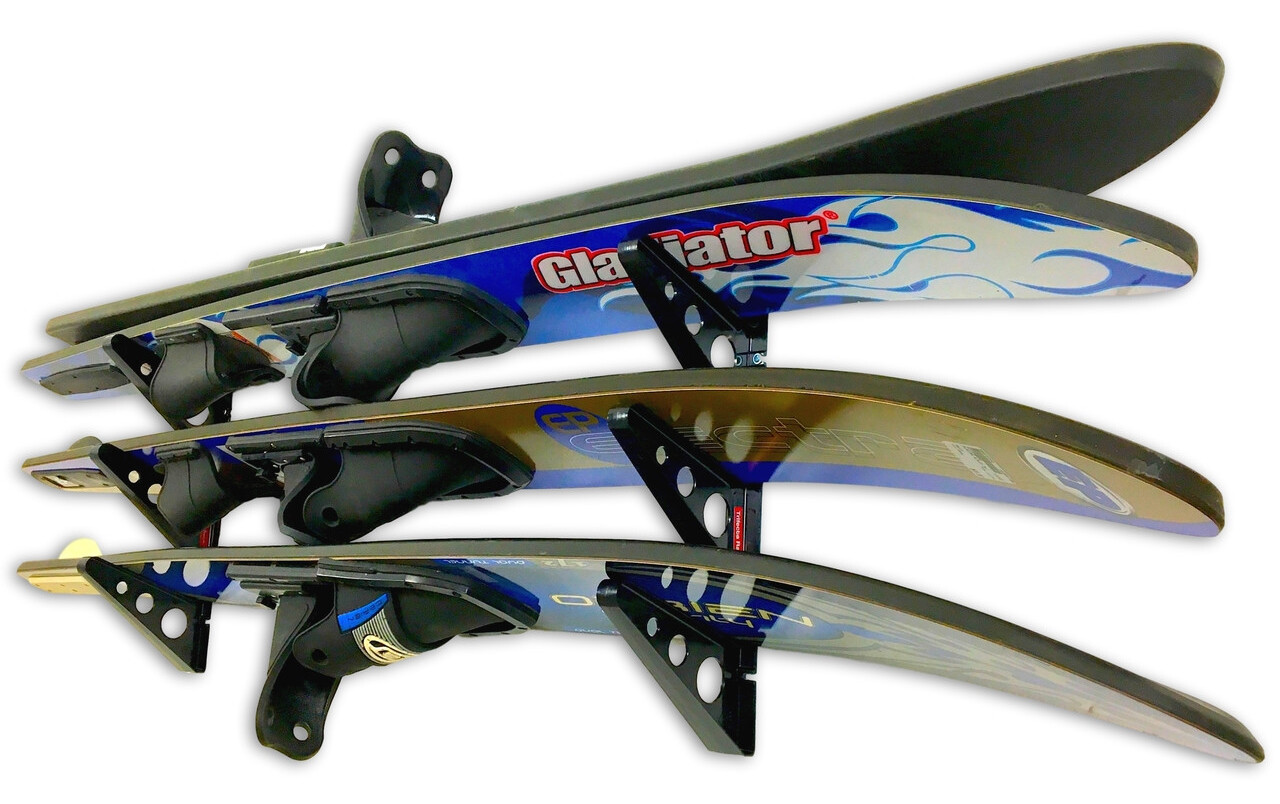

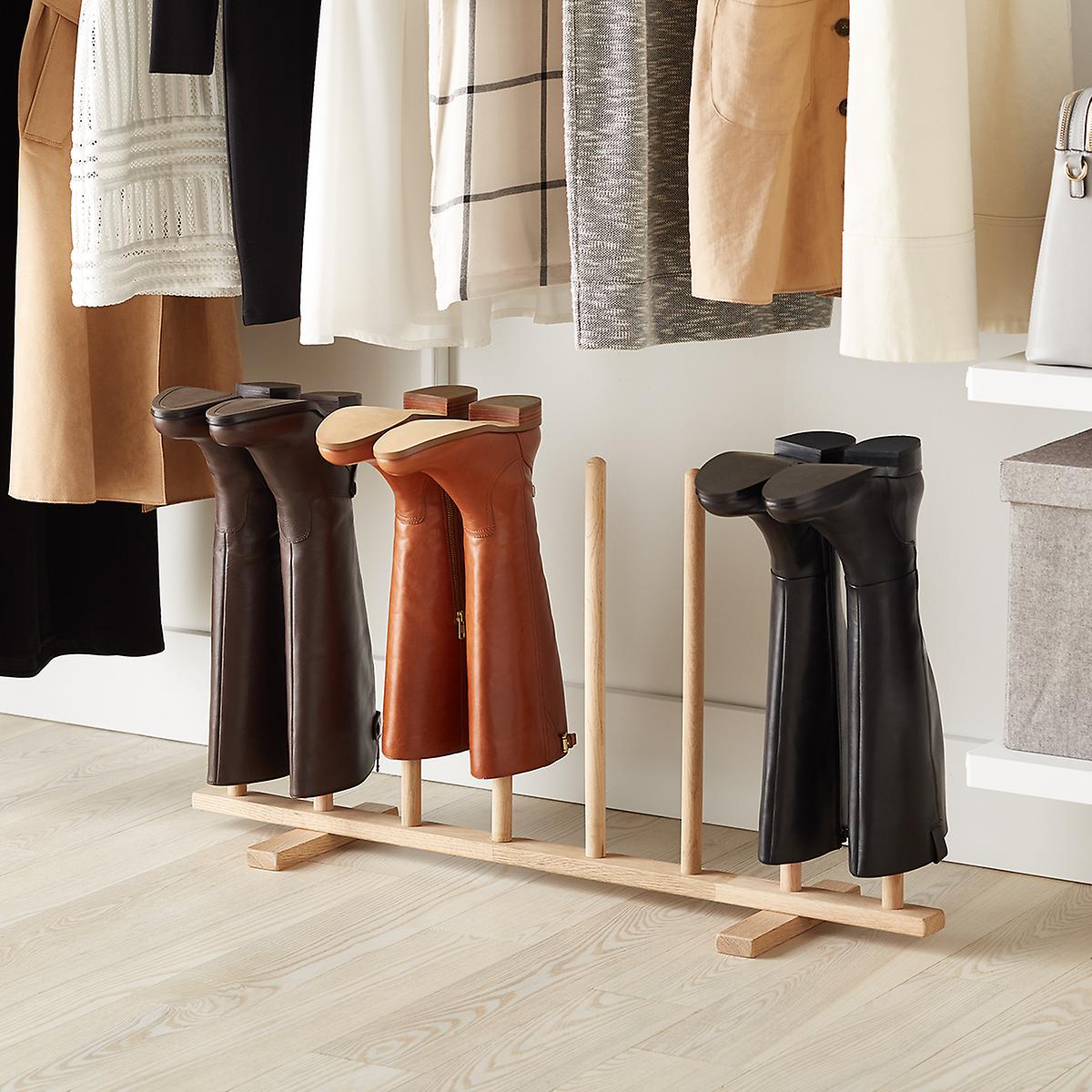
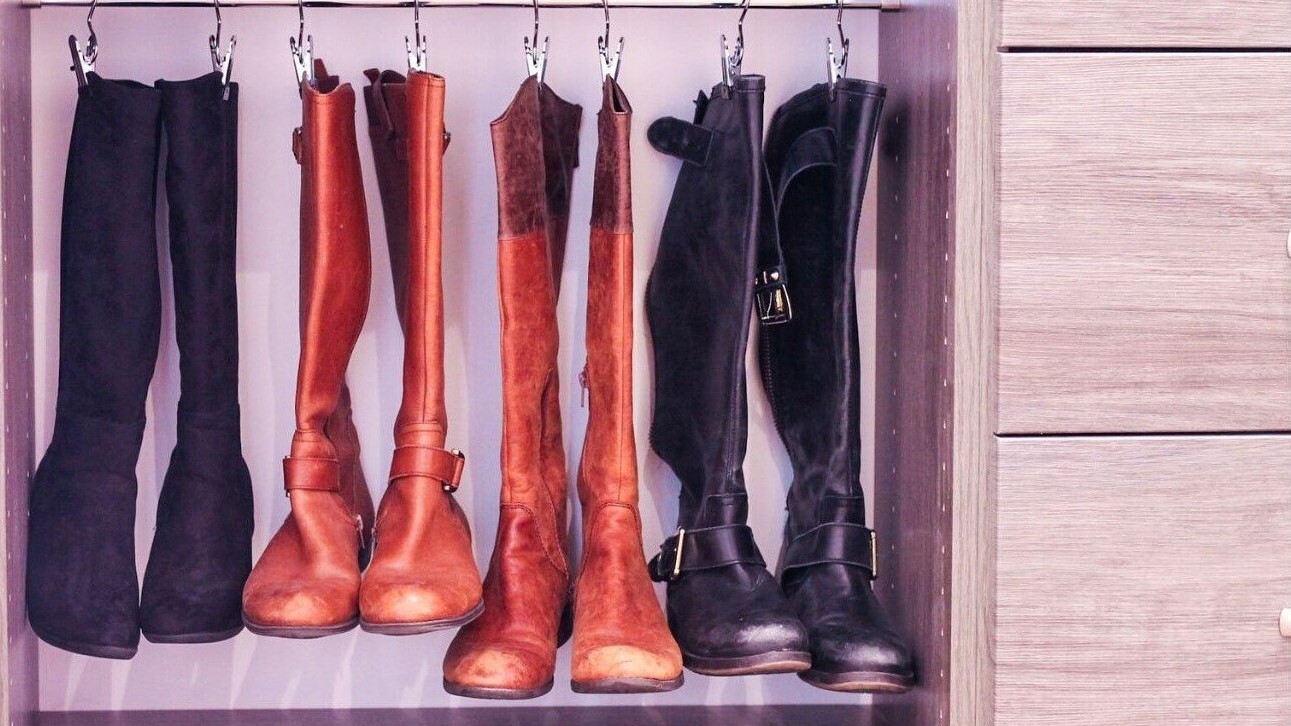
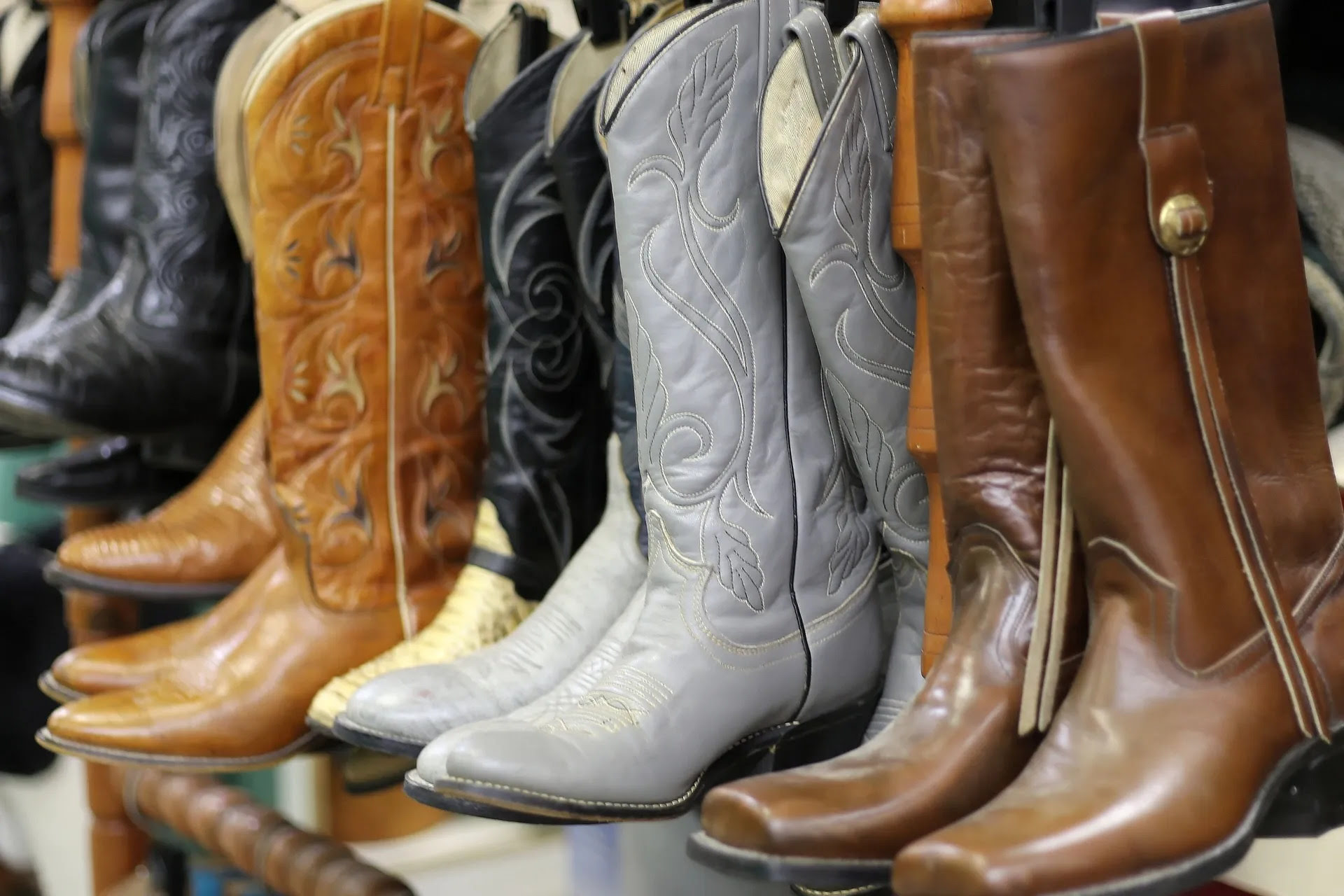
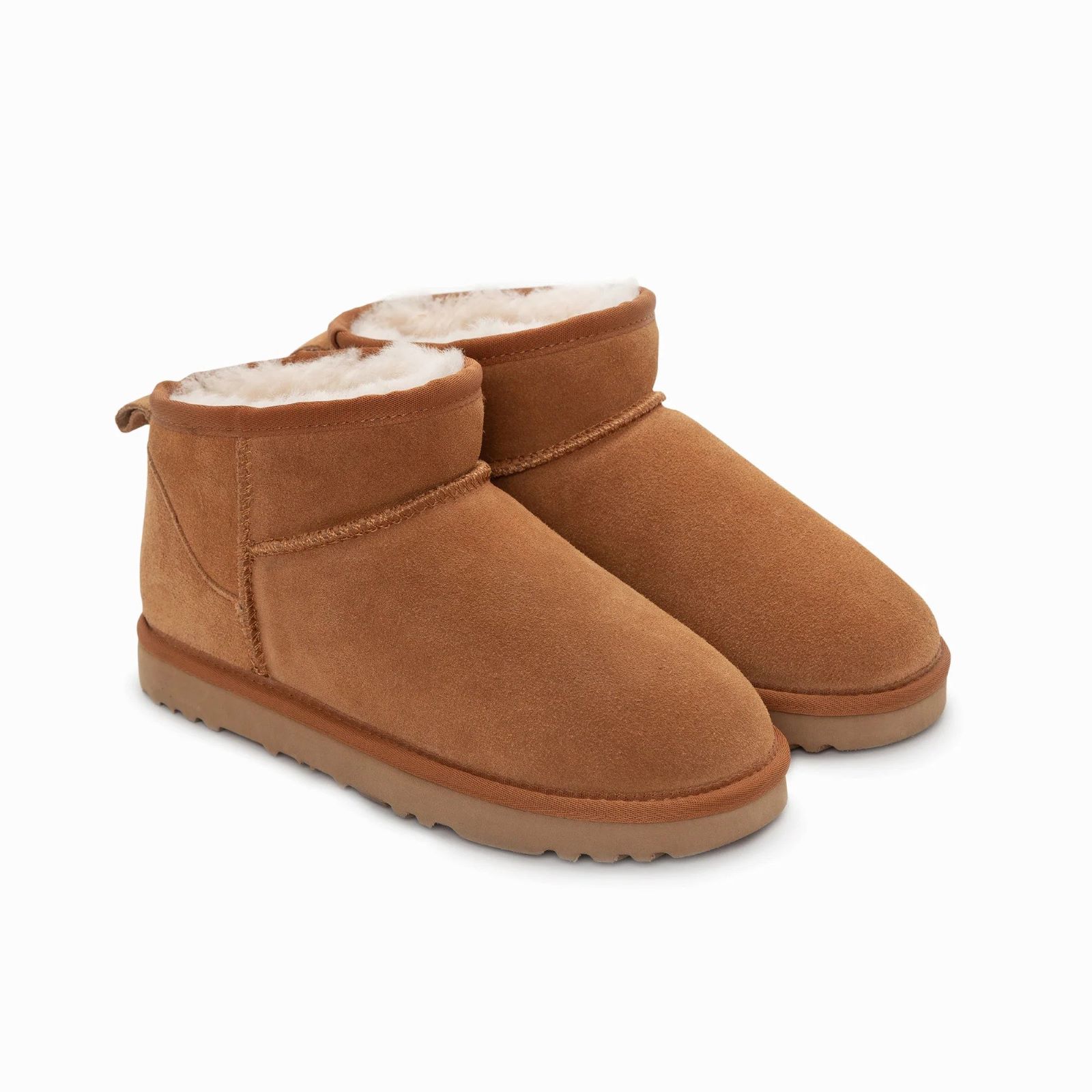
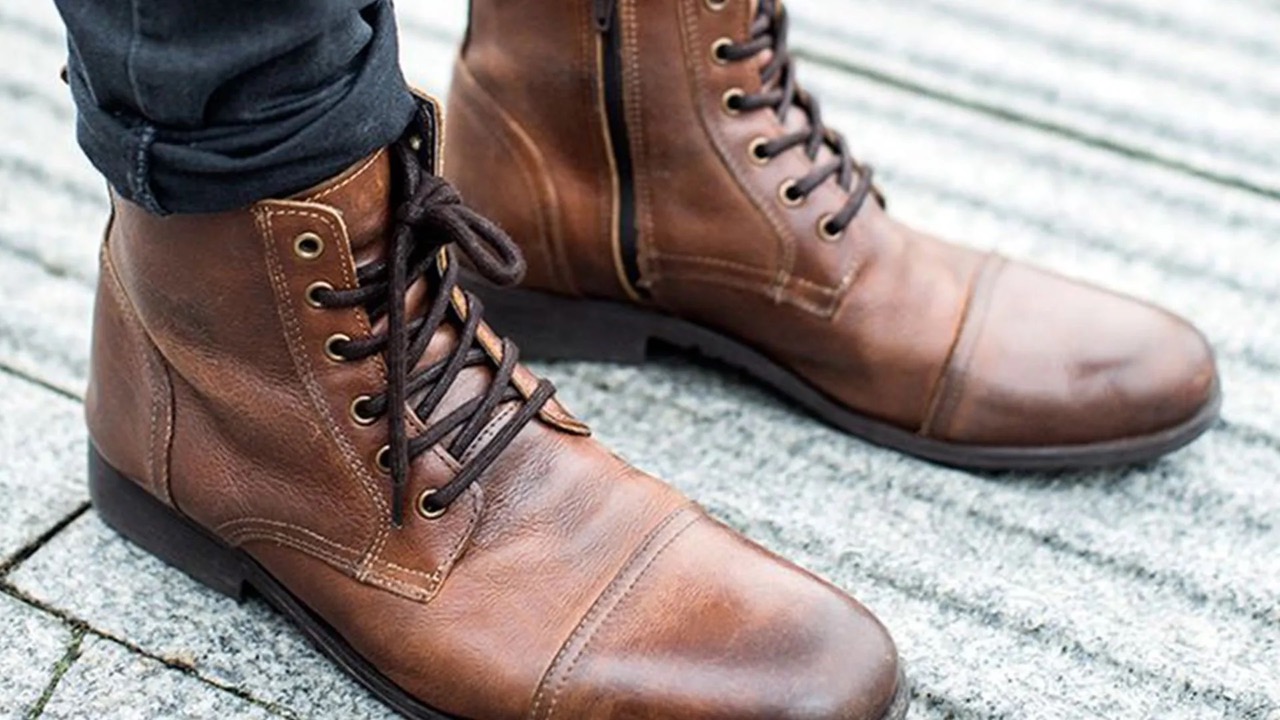
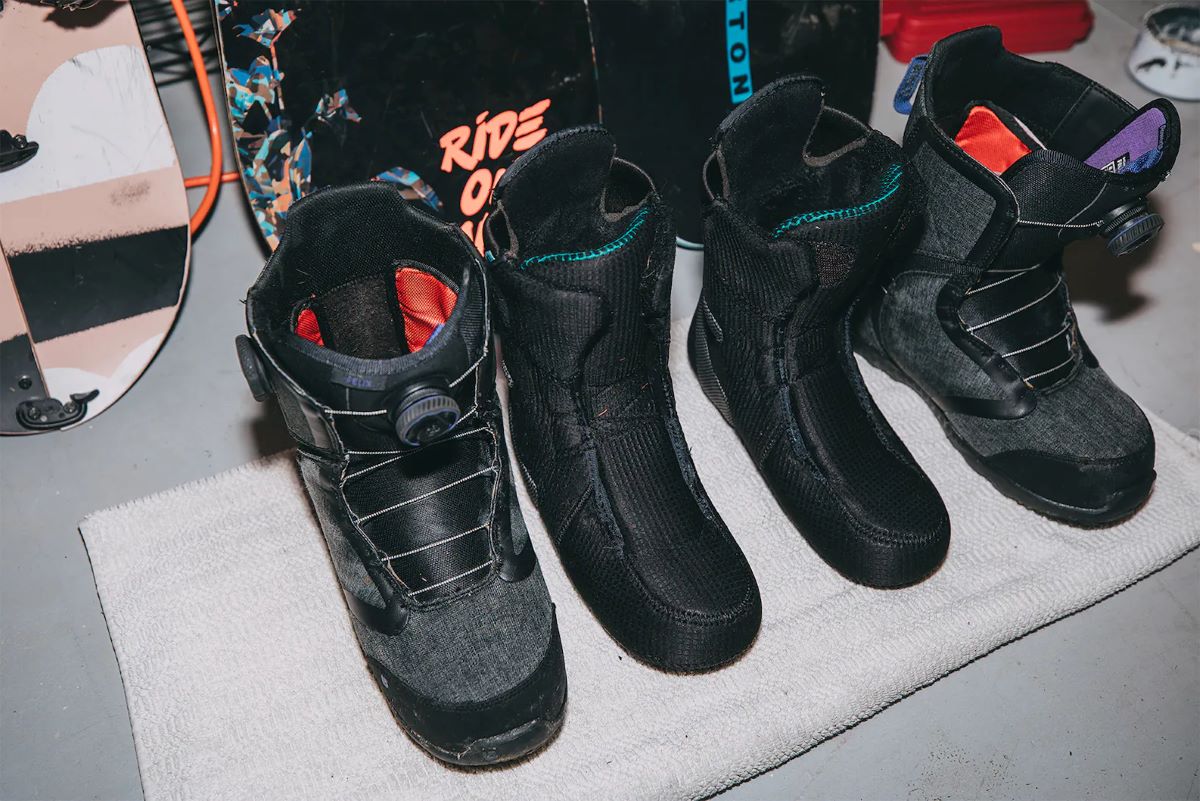
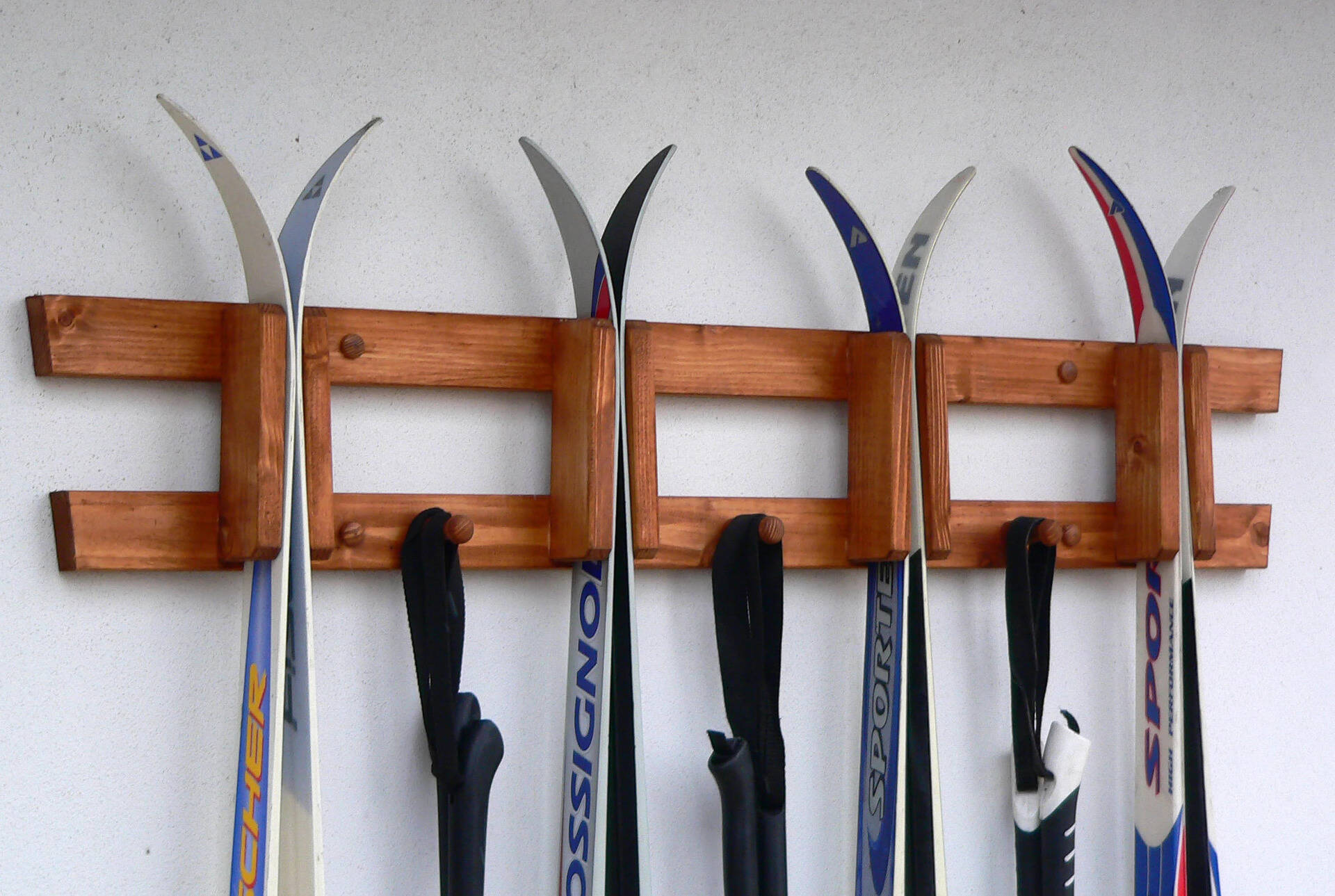
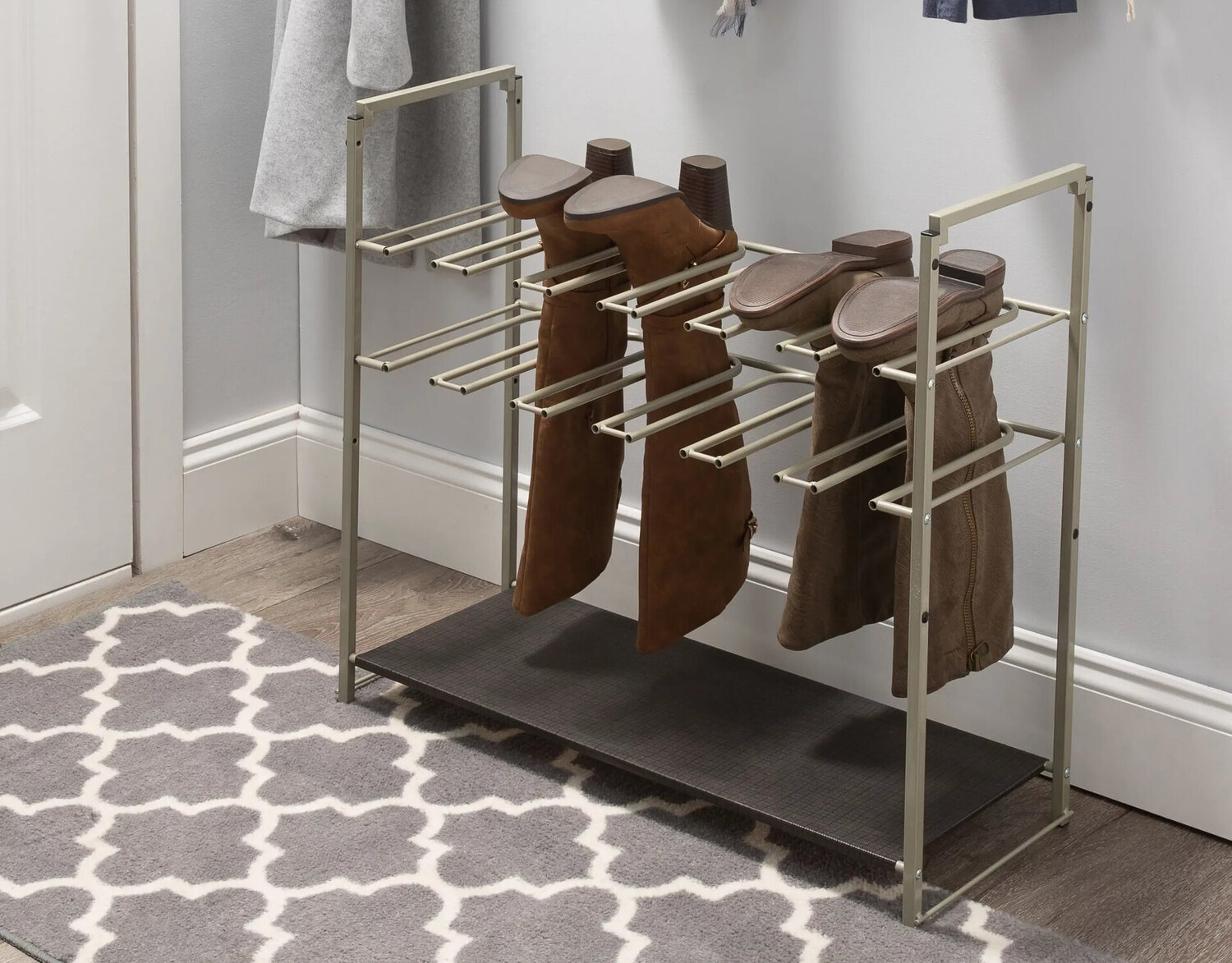
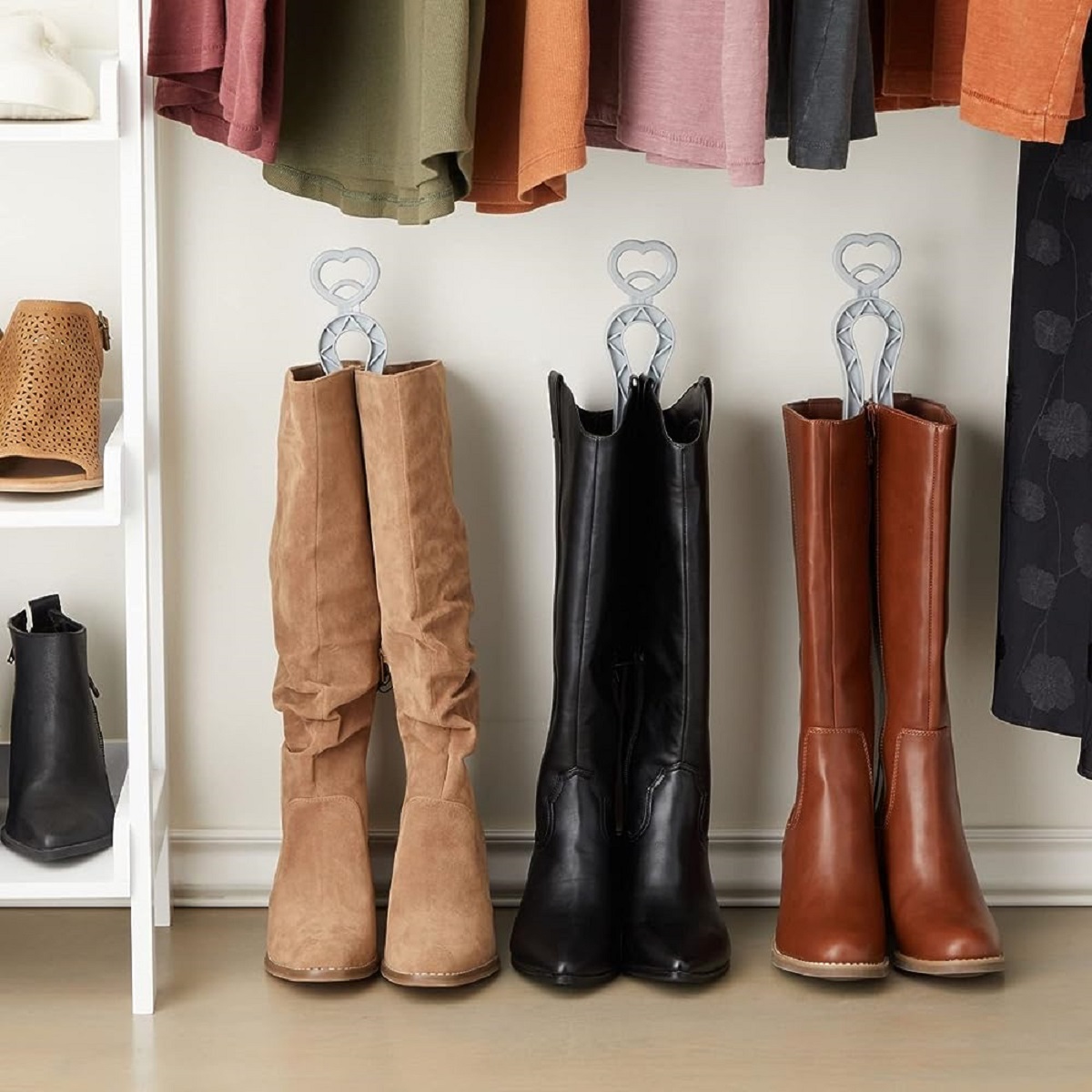


0 thoughts on “How To Store Ski Boots”